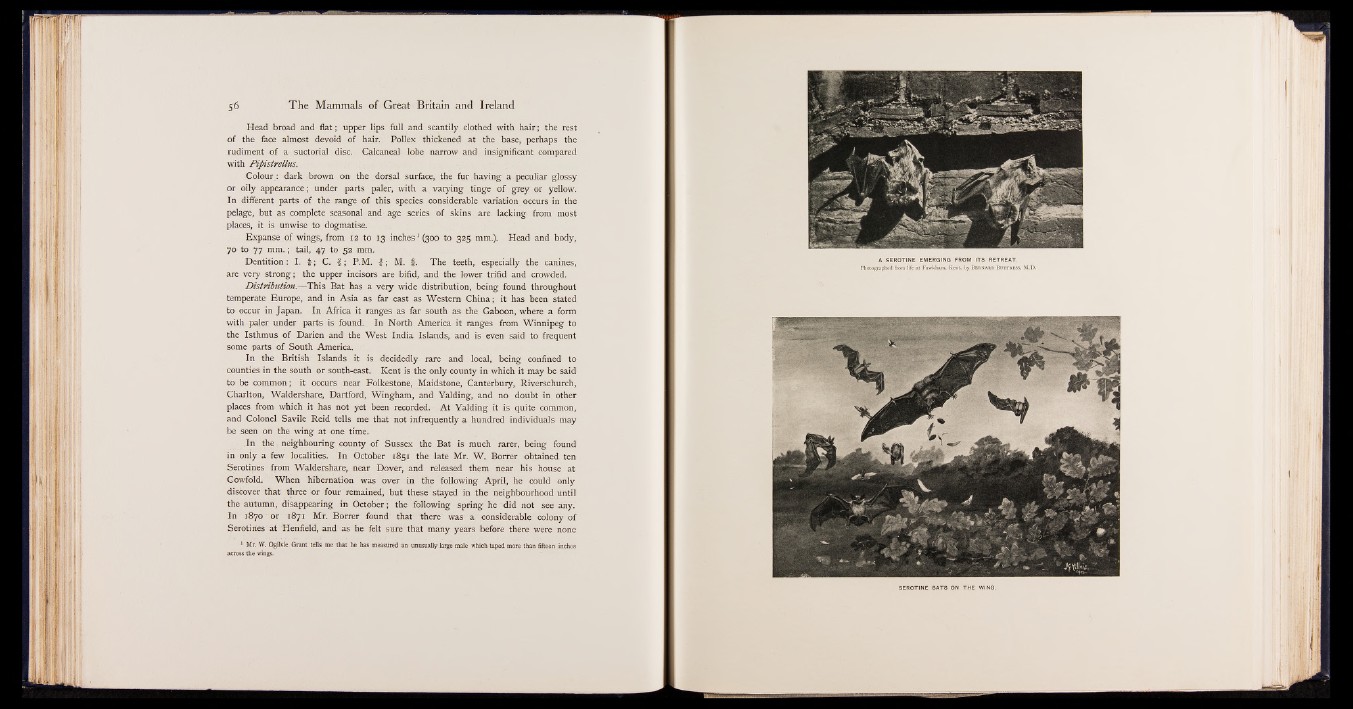
Head broad and flat; upper lips full and scantily clothed with hair; the rest
of the face almost devoid of hair. Pollex thickened at the base,. perhaps the
rudiment of a suctorial disc. Calcaneal lobe narrow and insignificant compared
with Pipistrellus.
Colour : dark brown on the dorsal surface, the fur having a peculiar glossy
or oily appearance; under parts paler, with a varying tinge of grey or yellow.
In different parts of the range of this species considerable variation occurs in the
pelage, but as complete seasonal and age series of skins are lacking from most
places, it is unwise to dogmatise.
Expanse of wings, from 12 to 13 inches1 (300 to 325 mm.), = Head and body,
70 to 77 mm.; tail, 47 to 52 mm.
Dentition: I. £; C. f ; P.M. f ; M. f. The teeth, especially the canines,
are very strong; the upper incisors are bifid, and the lower trifid and crowded.
Distribution.—This Bat has a very wide distribution, being found throughout
temperate Europe, and in Asia as far east as Western China; it has been stated
to occur in Japan. In Africa it ranges as far south as the Gaboon, where a form
with paler under parts is found. In North America it ranges from Winnipeg to
the Isthmus of Darien and the West India Islands, and is even said to frequent
some parts of South America.
In the British Islands it is decidedly rare and local, being confined to
counties in the south or south-east. Kent is the only county in which it may be said
to be common; it occurs near Folkestone, Maidstone, Canterbury, Riverschurch,
Charlton, Waldershare, Dartford, Wingham, and Yalding, and no doubt in other
places from which it has not yet been recorded. At Yalding it is quite common,
and Colonel Savile Reid tells me that not infrequently a hundred individuals may
be seen on the wing at one time.
In the neighbouring county of Sussex the Bat is much rarer, being found
in only a few localities. In October 1851 the late Mr. W. Borrer obtained ten
Serotines from Waldershare, near Dover, and released them near his house at
Gowfold. When hibernation was over in the following April, he could only
discover that three or four remained, but these stayed in the neighbourhood until
the autumn, disappearing in October; the following spring he did not see any.
In 1870 or 1871 Mr. Borrer found that there was a considerable colony of
Serotines at Henfield, and as he felt sure that many years before there were none
1 Mr. W. Ogilvie Grant tells me that he has measured an unusually large male which taped more than fifteen inches
across the wings.